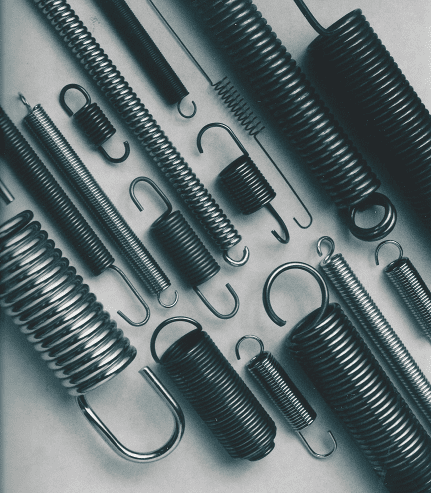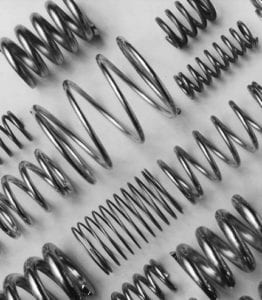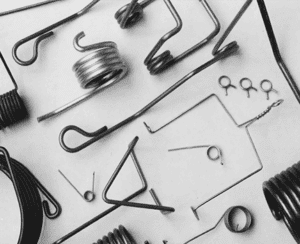What Type of Precision Spring Does My Project Need?
Does your project require a spring? If you know you need a spring but aren’t sure which type you need, you’re not alone!
At Gifford Spring, we love demystifying the spring selection process for our customers. It all boils down to understanding the three main types of springs: extension, compression, and torsion.
Once you understand the basic functionality of each spring, you’ll be able to choose the right one for your next project. But before we dive into the different types of springs, let’s get on the same page about what a spring actually does:
What Is a Spring?
The fundamental function of a spring is to absorb energy through deflection, then later return that energy. That means a spring is any material that can deform elastically and then return to its initial position.
Believe it or not, a straight piece of material can even be considered a spring in some cases! One of the simplest examples of a spring is a wooden pencil. A pencil is technically a spring because if you bend one slightly, it will deflect and then return (i.e. “spring back”) to its initial shape.
In manufacturing, springs are generally a bit more sophisticated than pencils and are used for movement. They resist force and transfer that force to deflect back to their original shape. When you need a spring for a part, it must be able to handle repetitive motion or continued stress without becoming damaged or damaging the surrounding components.
Gifford Spring manufactures a wide range of custom precision springs. To determine which type of spring your application requires, you’ll need to know the primary differences between the three types of springs.
Extension vs. Compression Springs
Extension and compression springs are made in a similar way. While both work in a linear fashion, they actually serve opposing purposes: one pushes, and the other pulls.
Extension Springs

Extension springs do exactly that: they extend. The primary force on an extension spring is a pulling force. As the spring is pulled, it absorbs force by elongating.
The neutral position of an extension spring is closed with no gaps between the coils.
In addition to the spring itself, extension springs are usually made with hooks on both ends that attach to the components pulling the spring. A trampoline is a perfect example: the springs at the edges have two hooks on them: one end connects to the frame, and the other connects to the mat. When someone jumps, the springs resist the tensile force and then contract, returning to their original position.
Extension springs are often external, visible components of products.
Compression Springs

Unlike extension springs that expand, compression springs constrict. When you push on a compression spring, it gets shorter or more compact.
The neutral position on a compression spring is open, meaning that there is always space left between the coils when there is no force being exerted on the spring.
A pogo stick is a great example of a compression spring. To use a pogo stick, a jumper must push their weight onto the spring, causing it to contract. Once the jumper reaches their lowest point, the spring is released, and the jumper is thrust into the air.
Compression springs are usually internal components that are hidden within the product. They typically function with an internal rod, an outer tube, or both.
If you’re deciding between an extension or compression spring for your part, consider the process the spring will assist, and ask yourself these questions:
- Do you want the spring to push or pull? This answer will determine if you need an extension or compression spring.
- How much space is available in the design? Spring type also depends on available space. Because compression springs contract, they require less space than extension springs, which expand.
- What is the preferred location of the spring? Compression springs are typically internal, while extension springs are usually external.
Keep in mind that if you’ve already designed your part, you may be locked into only one option when it comes to spring selection. That’s why we recommend building in spring considerations as early as possible in the design process.
But what if your part needs a spring that doesn’t push or pull? Rather than using a linear spring (i.e., extension or compression), you may need a torsion spring instead.
Torsion Springs

Unlike extension and compression springs, torsion springs are not linear. They use rotational force, or torque, to transfer energy.
Torsion springs resist rotational force in both directions. When you open a torsion spring, it will return to the original position. When you try to close it, it will return once again. These springs are used for rotational parts that must return to a neutral position over and over again.
Consider the motion of an airplane tray. You can lower the tray to your lap when you need to use it and raise the tray back up when you’re finished with it. Clothespins work the same way: squeeze to open, release to close.
As with extension and compression springs, the design of your assembly or product will dictate which type of spring is required. Our team is happy to help advise on the type of spring that will best meet your functionality requirements.
Here’s a quick reference to help you keep the three types of springs straight:
If you need to pull two components further apart, choose an extension spring
If you need to push components closer together, go with a compression spring
If you need parts to rotate and return to neutral, a torsion spring is the way to go.
Don’t get stuck with the wrong type of spring! Request a quote and let our precision spring experts help you identify the perfect spring for your next project.